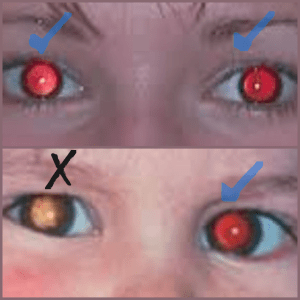Uncorrected refractive errors are the primary cause of vision loss and blindness, along with cataracts, according to the WHO.
It is important to have regular eye exams to ensure the health of your eyes. This is especially true for children, who may not yet understand that they are seeing things differently than others. As a parent, there are some signs you can look for which may indicate that your child needs an eye exam.
Q1. Why is a prompt diagnosis of refractive error crucial?
Early childhood is a continuing period of visual development and learning to see. The child begins focusing at this age and begins to develop a binocular vision and depth perception.
During this period if there is any obstruction in the visual processing, the visual development will not be complete and the child may experience visual issues squint and amblyopia
Early vision screening is therefore necessary, as is management.
Q2. When is the best time to have my child’s eyes examined for a vision test?

Ideally, every child between the ages of 3 and 4 should have a routine eye exam right before starting school.
It is best to take a baby to the eye doctor when they turn 1 year if one or both parents have high power.
Within 30 days of birth, a preterm child’s fundus must be examined to check for retinopathy of prematurity.
Q3. Why does a child have a refractive error? Can they avoid needing glasses by eating well?

Refractive error is primarily influenced by genetics and is inherited by children from their parents. However, even if both parents are emmetropes or have normal vision, a child may still develop a refractive error.
According to research, environmental factors like increased near work (reading, writing, using screens, etc.) can exacerbate genetic predisposition for short or nearsightedness. The following factors affect refraction in the eyes and prevent light from properly focusing on the retina:
1. Size of the eyes (long or small)
2. The shape of the structure of the eye like the cornea or lens (irregular/asymmetric/flat/steep)
Q4. How can I tell if my child needs glasses?
A child might not mention any visual issues because, to them, what they see is what everyone else sees as well. As a parent, you can recognize some warning signs that your child might need assistance seeing.
1. Squeezing of eyes:

One of the most typical symptoms is that the child frequently squeezes their eyes to see more clearly. This is because they are creating the pinhole effect by doing this. It means that the peripheral scattered light rays are blocked and only the central light rays are passing through the eye which is focused well on the retina. This makes them see better.
2. Squint:
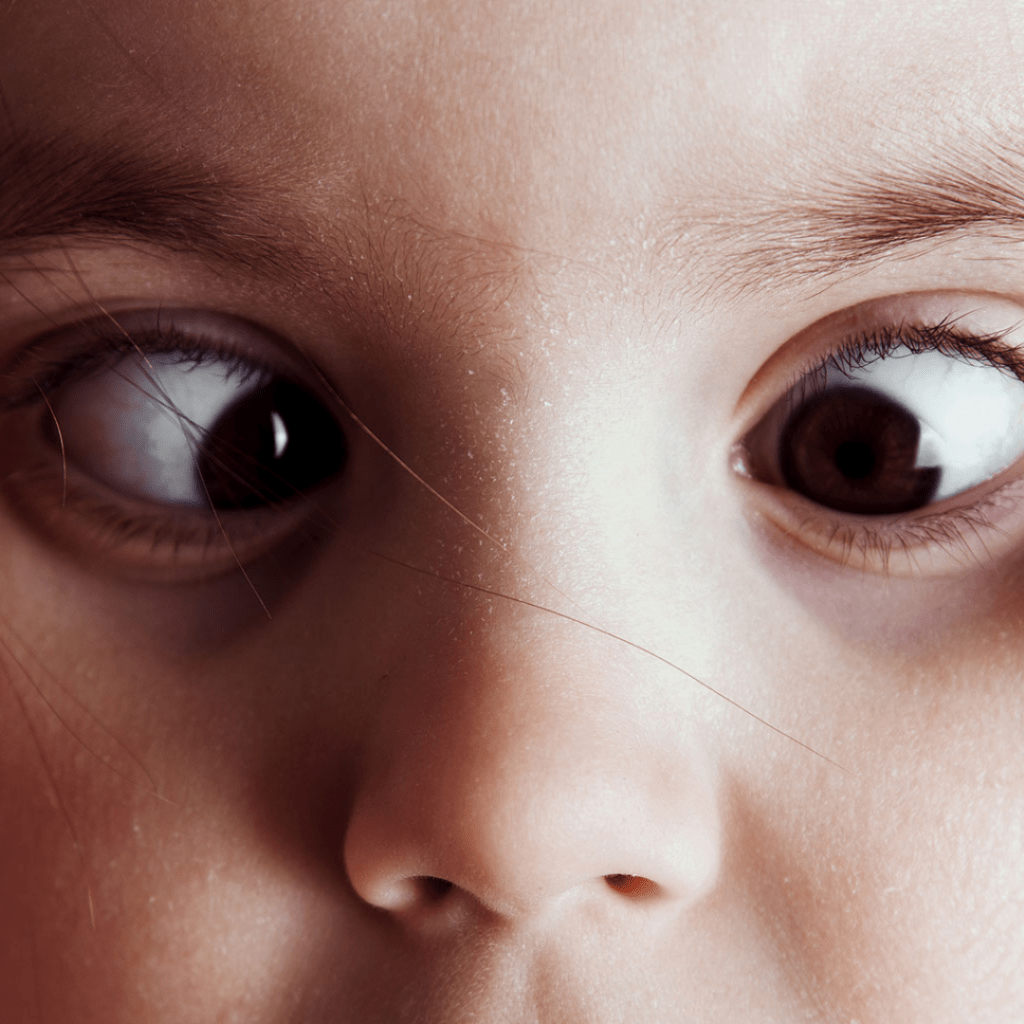
Squint, also known as strabismus in medicine, is yet another indicator of an untreated refractive error. Squinting is essentially an eye alignment problem. Either one or both eyes have an outward or inward deviation. This is more obvious when the child is tired.

3. Abnormal head posture:
Children with one eye having better vision than the other frequently incline or turn their heads in a way that they can see clearly and avoid seeing double. Astigmatism and strabismus are potential causes.
4. Covering one eye
Similar to how they tilt their heads, they may cover their weak eye as an adaptive behavior to prevent seeing double.
5. Seeing up close:
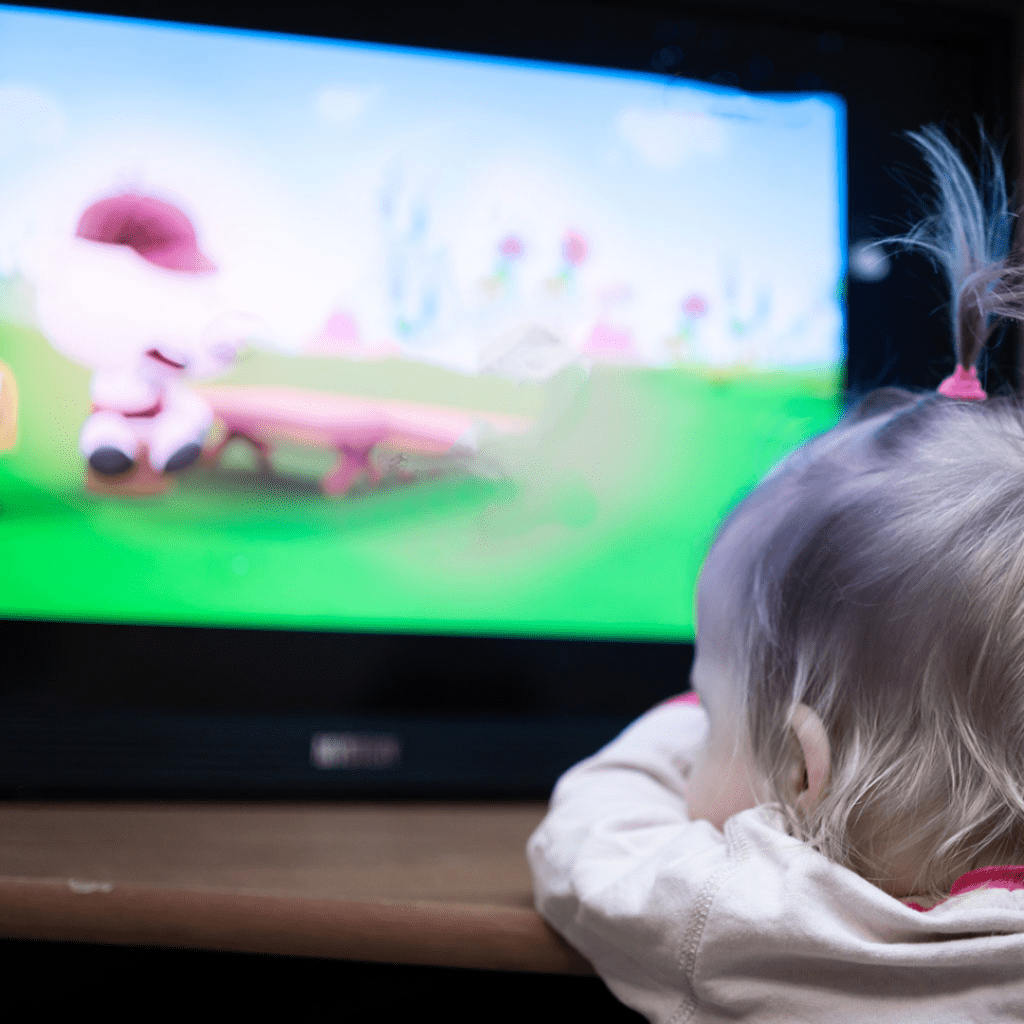
It is frequently observed that they sit too close to the TV or bring their digital device too close to them to see the screen.
6. Eye rubbing:
Children may believe that rubbing their eyes will make their vision clearer. Eye rubbing could also be due to allergies. Children must be discouraged from constantly rubbing their eyes as it has been linked to a corneal weakening condition called keratoconus.
7. Frequent Headaches or Eye Strain:

According to a study, children who experience frequent headaches without a known cause almost always have refractive errors.
Refractive errors can cause a variety of headaches. A frontal headache of a sharp nature is reported by some patients, while others experience dull peri-ocular pain.
8. Clumsiness:
Children with uncorrected refractive errors frequently drop things and trip over themselves due to their impaired depth perception and binocularity.
9. Difficulty in the classroom:
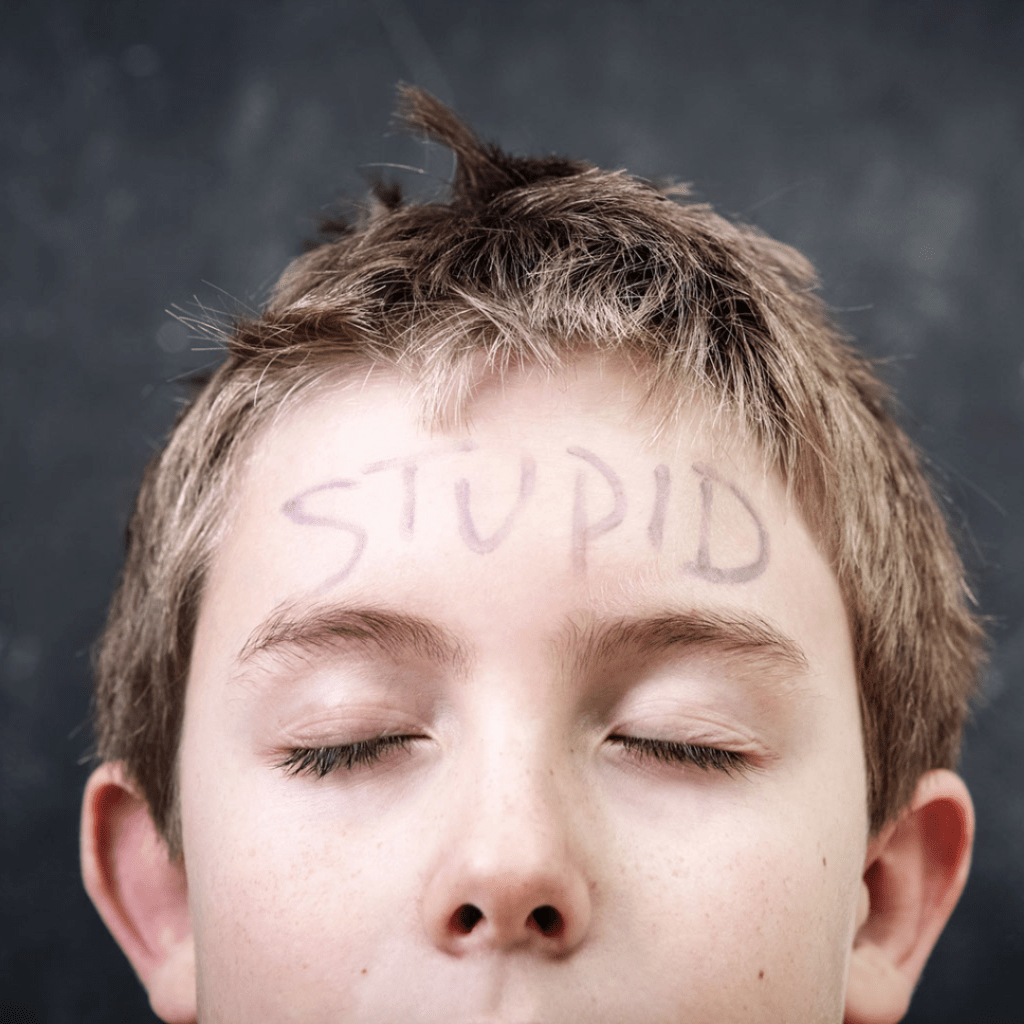
Often, these students are referred to as “weak students” because they seem unmotivated, don’t follow directions, or have a hard time reading. This severely damages their confidence and makes them suffer. When all they need is a pair of glasses to help them see clearly and understand things more effectively.
10. Photophobia
Photophobia or light sensitivity can affect children with refractive errors, especially if they have dry eyes or squint.
11. Abnormal red reflex in photographs:
Normally, a red reflex occurs when a camera’s flash illuminates the retina, which is rich in blood. Having red reflexes in both eyes when focusing on the camera lens indicates that both retinas are clear and healthy.
A white, yellow, or black reflection in one or both eyes indicates an abnormal red reflex. This may indicate the presence of an eye condition and serve as a warning.
According to Dr. Michael Repka of Johns Hopkins Hospital “Overwhelmingly, the most common cause of an abnormal red reflex is a refractive error,”
Q5. HOW CAN EYESTRAIN BE PREVENTED?
Making a few lifestyle changes for our child and developing healthy habits are two ways to prevent eyestrain.
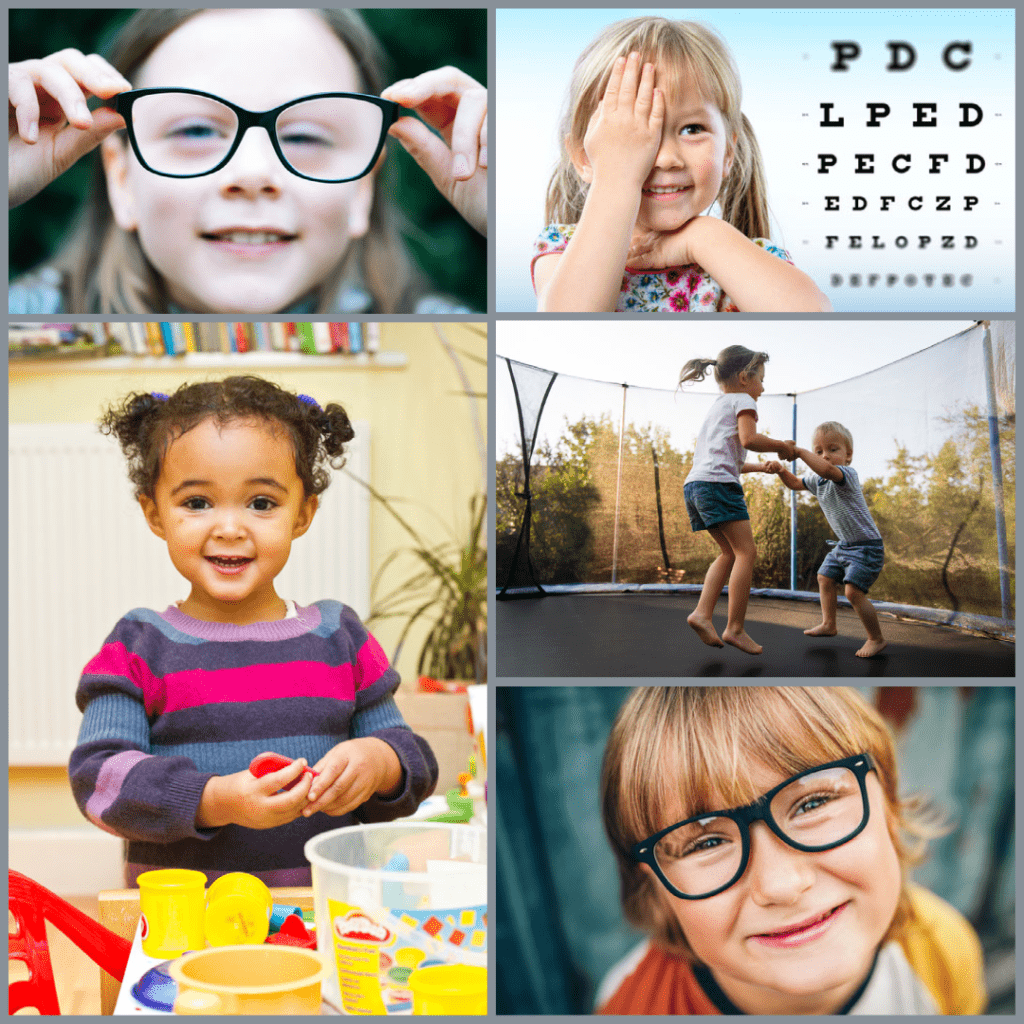
- Get your child’s eyes checked first so they can wear the recommended glasses. Uncorrected refractive error frequently results in eye fatigue.
- Ask them to consciously blink. Why is blinking so crucial? An average person blinks between 10 and 15 times per minute. However, this can be as low as 4-5 times per minute when working intently. There is consequently redness and watering.
- Use the 20-20-20 rule: Tell your child after every 20 minutes on the computer, spend 20 seconds looking at something 20 feet away. If you allow them an hour of screen time a day, spread it out into three 20-minute sessions.
- Sit in a space that has adequate lighting.
- Avoid using a fan or direct AC on your face because they can dry out the eyes and stain them.
- To soothe the eyes, lubricating eye drops can be used
- Reduce the brightness of your screen or switch to reading mode to alter the lighting settings. adequate hydration
- Limit their screen time: The American Academy of Pediatrics recommends that: Except for video chatting, children under the age of 18 to 24 months shouldn’t use digital media. The AAP now suggests limiting screen time for children between the ages of 18 months and 5 years to no more than one hour per day and emphasizing educational media instead.
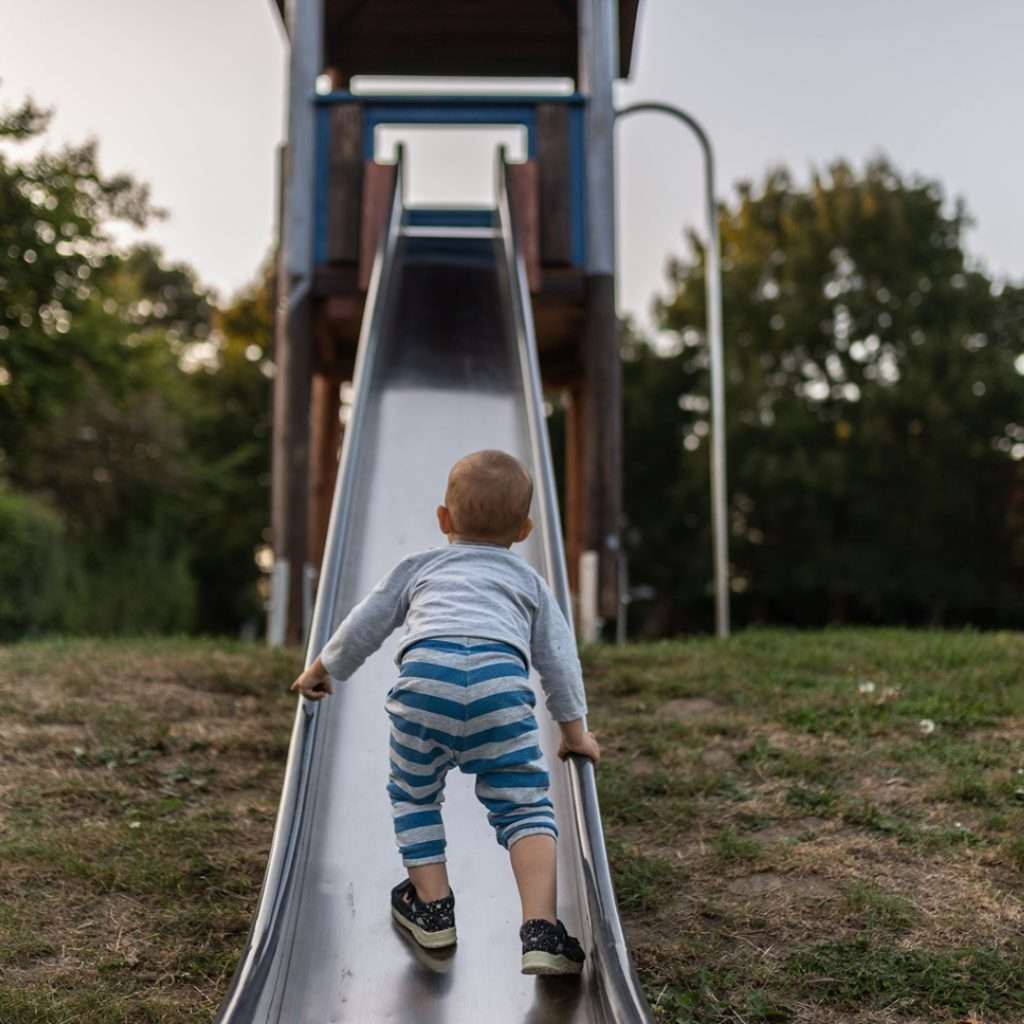
09. More outdoor activities: Studies have demonstrated a link between prolonged near work and short-sightedness. There are other factors besides just screens that can affect a child’s eye development. Traditional books and the overall amount of time spent indoors are other factors. Some studies have linked spending time outdoors with a reduced risk of nearsightedness, particularly in young children.
QUICK SUMMARY
Regular eye exams are important, especially for preschoolers, as the uncorrected refractive error is the most prevalent cause of visual impairment worldwide. A lazy eye or amblyopia can result from an untreated refractive error in children. Therefore, everyone must have yearly eye exams.

